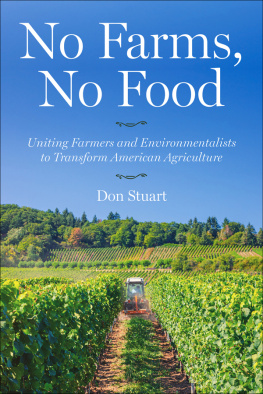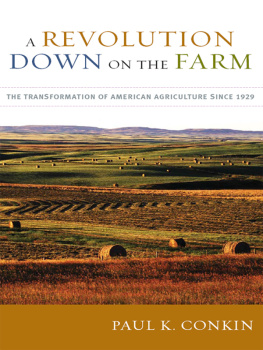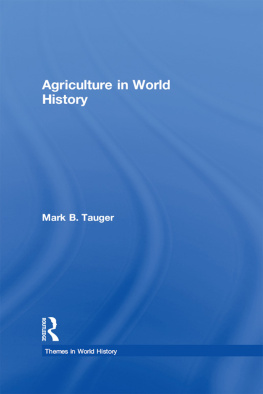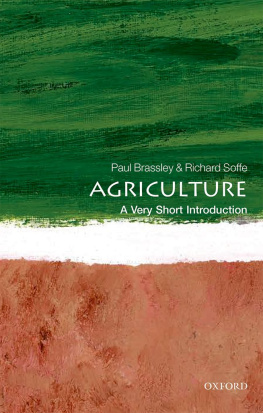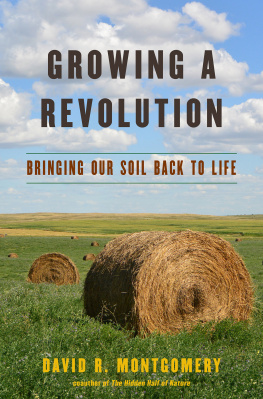PLOWED UNDER: AGRICULTURE AND ENVIRONMENT IN THE PALOUSE IS PUBLISHED WITH THE ASSISTANCE OF A GRANT FROM THE WEYERHAEUSER ENVIRONMENTAL BOOKS ENDOWMENT, ESTABLISHED BY THE WEYERHAEUSER COMPANY FOUNDATION, MEMBERS OF THE WEYERHAEUSER FAMILY, AND JANET AND JACK CREIGHTON.
2007 by the University of Washington Press
Printed in the United States of America
Designed by Pamela Canell
12 11 10 09 08 07 06 5 4 3 2 1
All rights reserved. No part of this publication may be reproduced or transmitted in any form or by any means, electronic or mechanical, including photocopy, recording, or any information storage or retrieval system, without permission in writing from the publisher.
University of Washington Press
PO Box 50096, Seattle, WA 98145
www.washington.edu/uwpress
Library of Congress Cataloging-in-Publication Data
Duffin, Andrew P.
Plowed under : agriculture and environment in the Palouse /
Andrew P. Duffin.1st ed.
p. cm.(Weyerhaeuser environmental books)
Includes bibliographical references and index.
ISBN-13: 978-0-295-98743-9 (hardback : alk. paper)
ISBN-10: 0-295-98743-x (hardback : alk. paper)
1. AgriculturePalouse River Valley (Idaho and Wash.) I. Title.
II. Title: Agriculture and environment in the Palouse. III. Series:
Weyerhaeuser environmental book.
S451.W2D84 2007 630.979739dc22 2007020207
The paper used in this publication is acid-free and 90 percent recycled from at least 50 percent post-consumer waste. It meets the minimum requirements of American National Standard for Information SciencesPermanence of Paper for Printed Library Materials, ANSI Z39.481984.

FOREWORD
The Wind's Gift of Wheat
WILLIAM CRONON
THE PALOUSE COUNTRY, in east-central Washington and the western panhandle of Idaho, is not well known to those who do not live there. Back in the mid-twentieth century, travelers on a cross-country road trip would have just missed its southern margins if they chose U.S. Highway 12 through the Snake River Valley as their east-west route. Today, if they make the same kind of journey on Interstate 90 through Spokane, they sail past the northern edge of the Palouse in much the same way, never giving the Washington-Idaho borderland between these two highways a second thought. Unless they have business at one of the two state universities that lie within the boundaries of the PalouseWashington State in Pullman and the University of Idaho in Moscowthere probably aren't many outsiders who would choose this region as a destination. The Palouse just isn't on the mental maps of most modern Americans.
This is their loss, for it is a striking landscape. Visit it during growing season, and your eyes will be met by an endless expanse of hills covered by equally endless fields of wheat. At harvest time, the visual effect is like nothing so much as a golden sea, its surface kept perennially in motion by the play of the prevailing winds upon yellowing stalks heavily laden with grain. There is little flat ground here. The hills dip and roll like waves approaching a beach, their steeper, northern slopes reaching upwards of fifty degreestough going even for modern agricultural machinery, and tougher still for earlier farmers relying on teams of horses to pull their plows. Yet from the evidence of these abundant fields, the potential rewards are well worth the challenges posed by the steep slopes.
Were you to conclude from this scene that it is an immensely fertile agricultural countryside, one of the most productive in the United States, you would certainly be correct. The reasons for its productivity, though hidden, are among the most interesting features of the Palouse, arising as they do from a remarkable geological history that explains both the unusual hilliness of the terrain and the cornucopian abundance of its wheat fields. If you could slice through these hills with an enormous knife, you would discover that they contain little or no bedrock. Instead, they consist of light, friable, marvelously fertile soil all the way down to the hard surface of lava on which they rest. If more ordinary landscapes have taught you to associate hills with rocks, then an underground view of this one would likely persuade you that the Palouse is a pretty unusual place.
How did all this rich soil come to be so copiously piled up to create these hills? The past of this place is full of geological drama that helped create its terrain. Seventeen to sixteen million years ago, eastern Washington and Oregon experienced an immense series of lava flows that laid down the hundreds of feet of basalt on which the Palouse hills now lie. Farther to the west, explosive eruptions of peaks in the Cascade rangeMount St. Helens most recentlyhave ejected great quantities of volcanic ash that, in drifting down from the sky, have contributed their fertility to regional soils. Thirteen thousand years ago, Glacial Lake Missoula repeatedly sent some of the most enormous floods ever seen in North America roaring across eastern Washington, scouring the landscape that lies just west of the Palouse hills and depositing fine silt in slack water pools left behind as the floods receded.
But although these cataclysmic events all made their contributions to the Palouse, its rich, rockless soils mainly arrived here via a much more commonplace route. These hills are made of loess, a fine, light soil blown by winds, which in this case piled up glacial flour, volcanic ash, and floodplain silt along the dry margins of the great continental ice sheets that covered the higher latitudes of North America until just over twelve thousand years ago. As the prevailing southwesterly winds carried untold millions of tons of soil particles into what is today the Palouse, they gradually built up the same kinds of dunes that one more frequently sees rising beside sandy seashores. This accounts for the patterns that make one remember the ocean when viewing this landscape from afar. It also explains why the Palouse hills more often than not have gentle southern slopes but steep northern ones: the predominant direction of the winds made them so. Because loess soils are famously fertile the world overIowa too is blessed with loess from the margins of the great ice sheets, as are most of the richest farmlands on the planetthe Euroamerican pioneers who first tried planting wheat here found that their farms produced uncommonly high yields. Although such settlers lacked the geological knowledge to understand the ultimate source of their prosperity, the richness of the Palouse soiland so too of these farmswas a gift of the western wind.
This is the geological backdrop of the story Andrew Duffin tells in Plowed Under: Agriculture and Environment in the Palouse


